Shunyata Anaconda Zitron Power Cable - First Impressions

DarqueKnight
Posts: 6,765
Introduction
I took advantage of Shunyata's recent "buy one get another at 50% off" promotion and acquired a pair of Anaconda ZiTron power cords for my power amps. I was intrigued by the ZiTron technology, which works as described below:
"ZiTron technology reduces dielectric distortion within a signal wire by neutralizing the electric charge differential between the signal conductor and the insulating dielectric material. This is accomplished with the use of a conductive shield that surrounds the signal wire's dielectric material. The electric signal carried by the conductor is also imposed upon the shield through an electric field compensation circuit. The electric field of the conductor and the electric field of the shield oppose one another and create a near zero equivalent electric force within the dielectric material. This effectively neutralizes the charge/discharge distortions created by the dielectric material in the presence of an alternating signal. Since the conductor and shield both carry the signal electric field, they dynamically track the varying alternating signal to create a continuous net zero charge differential within the insulating dielectric. The electric field compensation circuit allows the signal's electric field to be imposed upon the shield, while at the same time limiting current flow and eddy currents within the shield."
My AudioQuest Sky and Everest signal and speaker cables use a similar concept (AQ's Dielectric Bias System) to condition the cable's insulation.
Caveat
Shunyata specifies a 500 hour break in period, but I was initially only offered a one week trial period by the dealer. Therefore, this is more of a "first impressions" report than a full review. After I had emailed my feedback to the dealer, he emailed later that day that I should keep the cables for the full 500 break in period. However, the dealer's reply came to my smartphone while en route to deliver the cables to FedEx. I considered keeping the cables longer after arriving at FedEx and reading the dealer's email, but since I had not been hearing steady improvements over the seven days I had the cables, I decided against further evaluation.
What's In The Box
The Anaconda's packaging was excellent. Inside the thick corrugated box was the power cable sealed in a plastic tube with dissicant packet, a canvas storage bag, quality control inspection certificate, instruction booklet, warranty card, three reviews of other Shunyata products and an interview with Shunyata's founder.
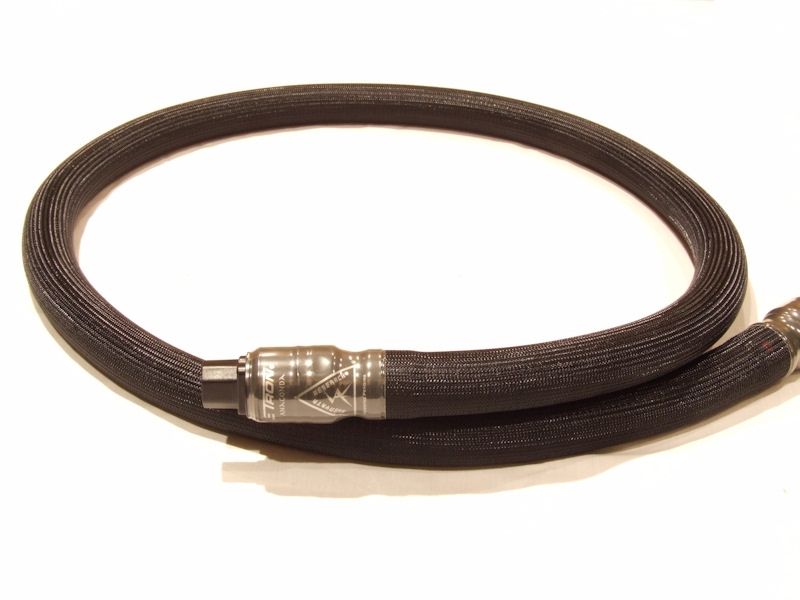
Figure 1. Shunyata Anaconda ZiTron power cord.
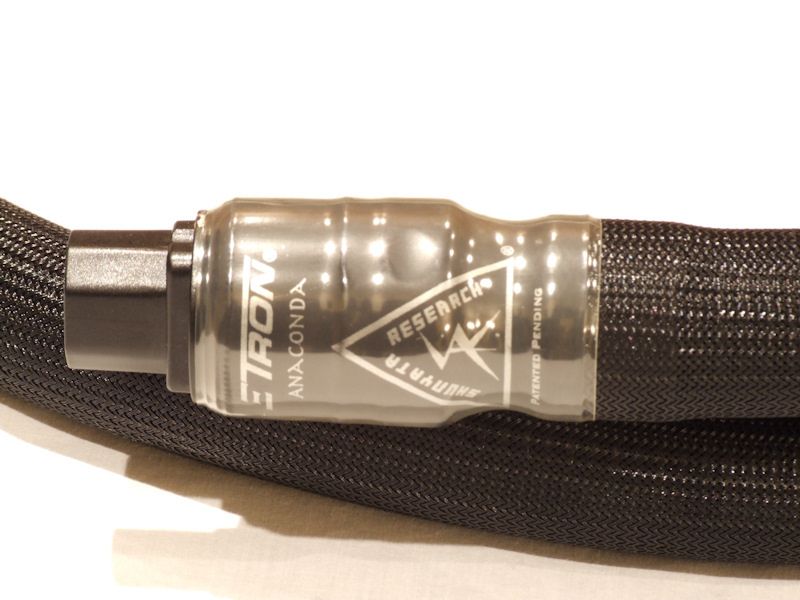
Figure 2. Anaconda IEC connector end. Each cord comes with a serial number.
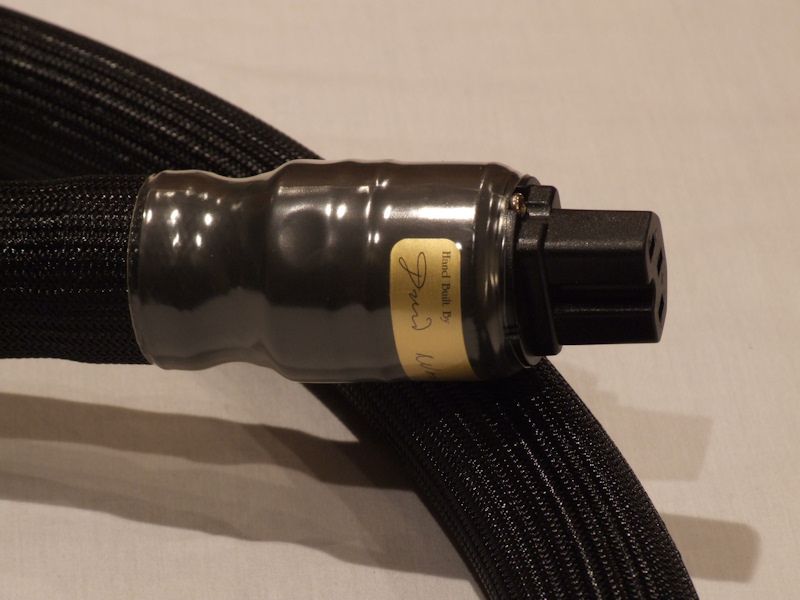
Figure 3. Anaconda plug end, with assembler's signature.
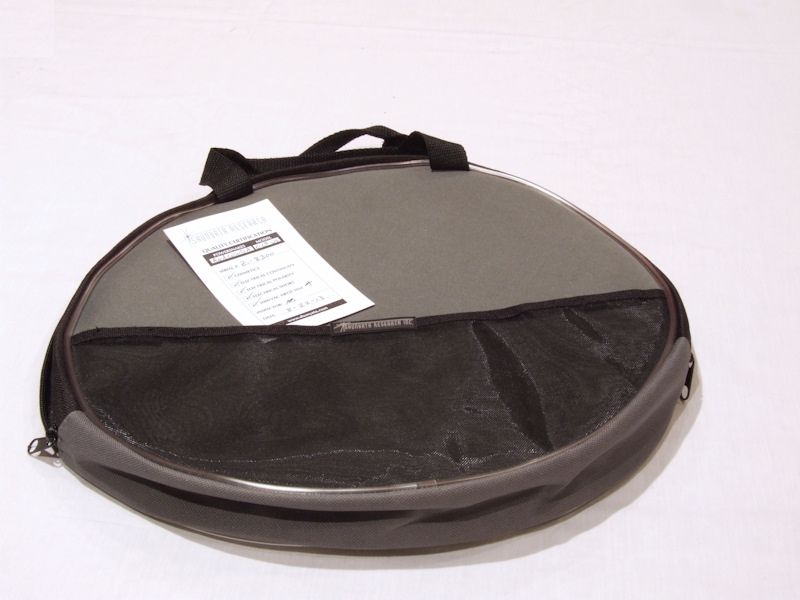
Figure 4. Anaconda canvas storage bag and quality control certificate showing date of manufacture and
inspector's initials.
Power Cord Construction Comparison
The power cables currently used on my power amps are PS Audio AC-12s. The primary material differences between the two:
Shunyata Anaconda ZiTron Power Cable
CDA 101 copper conductors
7 AWG effective wire gauge
Cryogenically treated
Proprietary "CONN" connectors with nickel plated pure copper
1 year warranty, extendable to 5 years with completed warranty card.
Made in the U.S.A.
Weight: 2.85 pounds, 2 meter length
Price: $3,300, 2 meter length (1.75 meter length ($3,000), was auditioned for this review)
PS Audio AC-12 Power Cable
PCOCC copper conductors
8 AWG effective wire gauge
Proprietary cold welded connectors with gold-plated high copper content brass
Nitrogen-injected polyethylene foam conductor insulation.
1 year warranty
Made in Red China (Get Over It)
Weight: 3.3 pounds, 2 meter length
Price: $1,200 2 meter length
The Anaconda presents a more impressive aesthetic. However, its much larger outer jacket is largely empty and is compressible by pinching between thumb and forefinger down to about 1/2" diameter, similar in size to the AC-12's jacket. I received this prompt response from Shunyata to my inquiry about the hollow outer tube:
"This outer corrugated tubing was used for several reasons. First and foremost it was used for protection for the conductors. Secondly it was also an aesthetic decision and during the prototype stages of this product we also found there was a sonic advantage to having the conductors inside of this tube. We chose to make it this way for those three main reasons; performance, protection and aesthetics."
I appreciated the Anaconda's flexible body compared to the stiff AC-12.
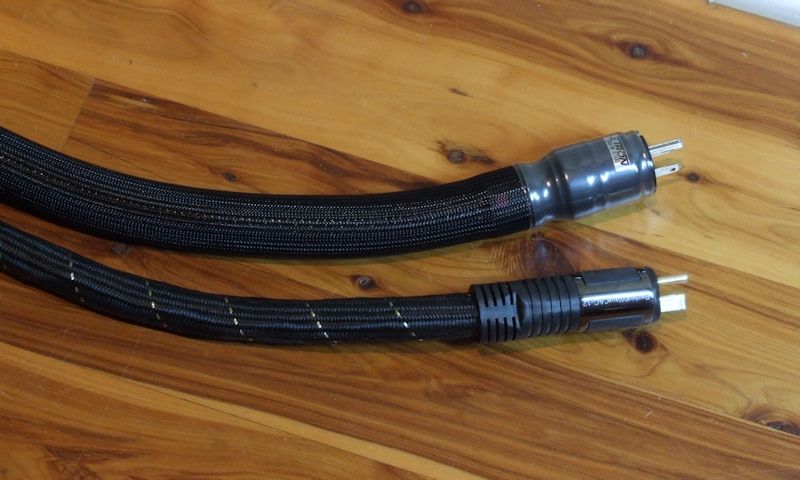
Figure 5. The Anaconda's inner jacket is about the same size as the AC-12's. The Anaconda's outer jacket is
a flexible, hollow tube surrounding the inner jacket.
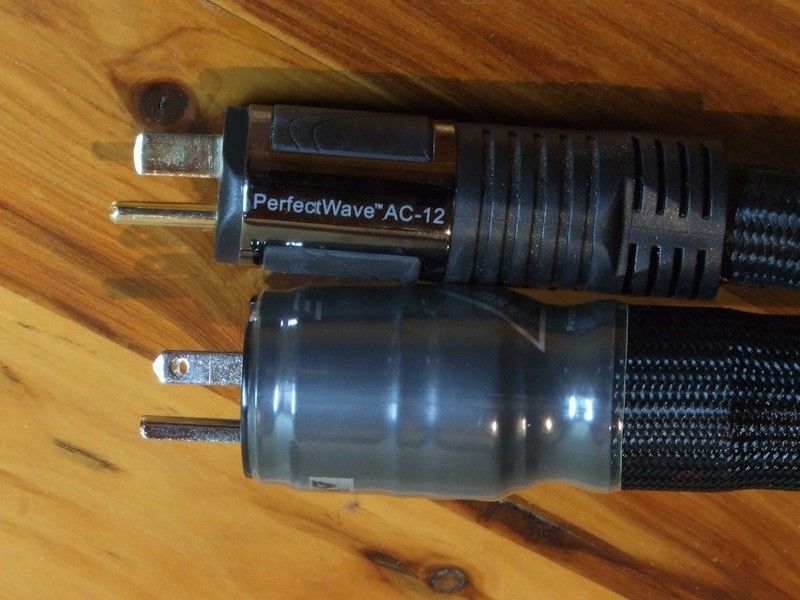
Figure 6. Anaconda and AC-12 plug blade comparison.
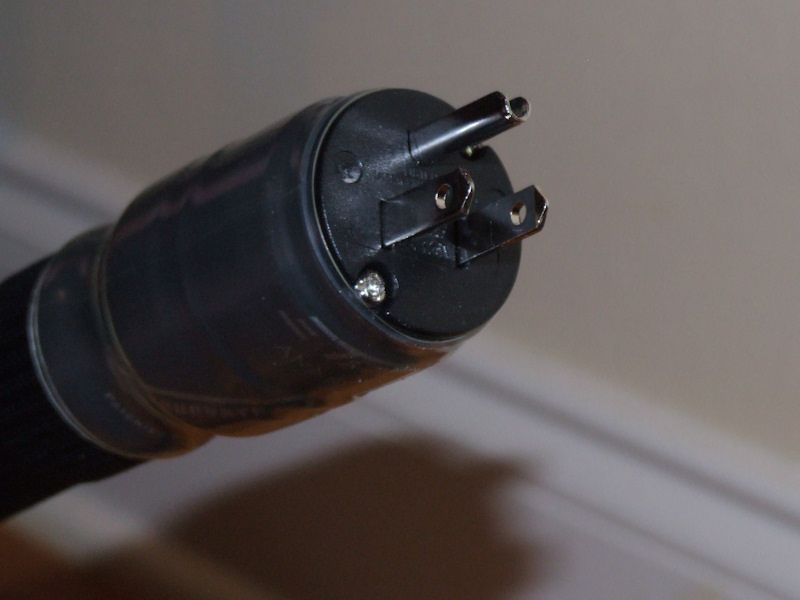
Figure 7. Close up of Anaconda plug.
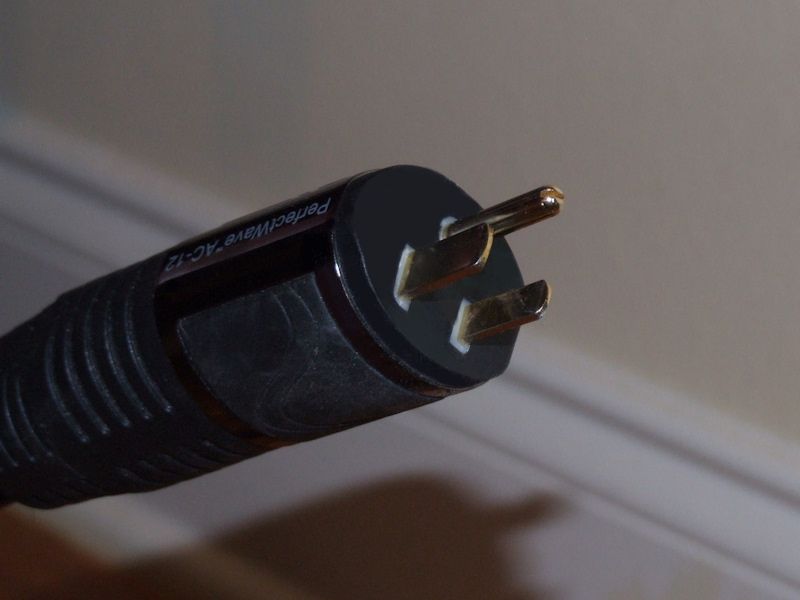
Figure 8. Close up of AC-12 plug with wider and thicker than standard blades and removable ground pin.
I expressed some disappointment to the dealer about the comparatively loose fitting Anaconda plugs. The Anaconda plugs fit loosely in my audio grade Power Port Premier receptacles and in my ordinary household receptacles and sagged in the receptacle under the cord's weight. The AC-12 plugs fit tightly in both receptacles, even with the AC-12's heavier weight. A loose fitting plug can be affected by vibrations in the room and induce noise at the plug blade/receptacle junction. The dealer said this about the Anaconda's blades:
"Regarding the blade width, this is intentional, and it is a product of the metal they use. Thicker blades actually ablate the outlets, which is not good for longevity of the outlets or cables."
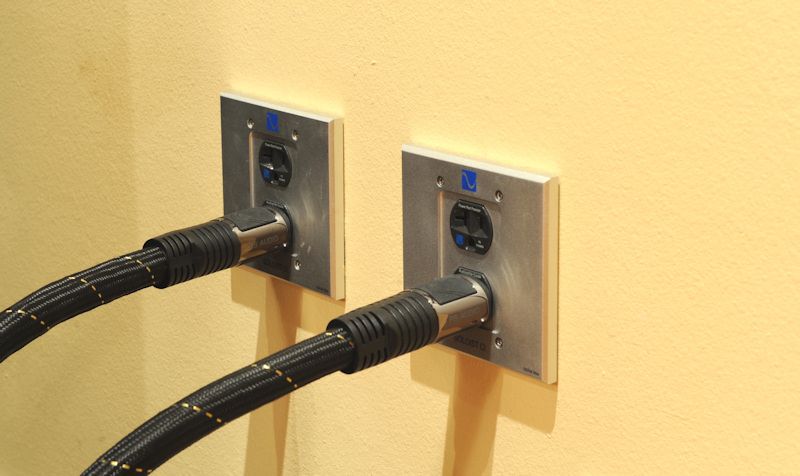
Figure 9. AC-12 plugs do not sag in my receptacles. The stiffer body can add some support depending on
arrangement.
I took advantage of Shunyata's recent "buy one get another at 50% off" promotion and acquired a pair of Anaconda ZiTron power cords for my power amps. I was intrigued by the ZiTron technology, which works as described below:
"ZiTron technology reduces dielectric distortion within a signal wire by neutralizing the electric charge differential between the signal conductor and the insulating dielectric material. This is accomplished with the use of a conductive shield that surrounds the signal wire's dielectric material. The electric signal carried by the conductor is also imposed upon the shield through an electric field compensation circuit. The electric field of the conductor and the electric field of the shield oppose one another and create a near zero equivalent electric force within the dielectric material. This effectively neutralizes the charge/discharge distortions created by the dielectric material in the presence of an alternating signal. Since the conductor and shield both carry the signal electric field, they dynamically track the varying alternating signal to create a continuous net zero charge differential within the insulating dielectric. The electric field compensation circuit allows the signal's electric field to be imposed upon the shield, while at the same time limiting current flow and eddy currents within the shield."
My AudioQuest Sky and Everest signal and speaker cables use a similar concept (AQ's Dielectric Bias System) to condition the cable's insulation.
Caveat
Shunyata specifies a 500 hour break in period, but I was initially only offered a one week trial period by the dealer. Therefore, this is more of a "first impressions" report than a full review. After I had emailed my feedback to the dealer, he emailed later that day that I should keep the cables for the full 500 break in period. However, the dealer's reply came to my smartphone while en route to deliver the cables to FedEx. I considered keeping the cables longer after arriving at FedEx and reading the dealer's email, but since I had not been hearing steady improvements over the seven days I had the cables, I decided against further evaluation.
What's In The Box
The Anaconda's packaging was excellent. Inside the thick corrugated box was the power cable sealed in a plastic tube with dissicant packet, a canvas storage bag, quality control inspection certificate, instruction booklet, warranty card, three reviews of other Shunyata products and an interview with Shunyata's founder.

Figure 1. Shunyata Anaconda ZiTron power cord.

Figure 2. Anaconda IEC connector end. Each cord comes with a serial number.

Figure 3. Anaconda plug end, with assembler's signature.

Figure 4. Anaconda canvas storage bag and quality control certificate showing date of manufacture and
inspector's initials.
Power Cord Construction Comparison
The power cables currently used on my power amps are PS Audio AC-12s. The primary material differences between the two:
Shunyata Anaconda ZiTron Power Cable
CDA 101 copper conductors
7 AWG effective wire gauge
Cryogenically treated
Proprietary "CONN" connectors with nickel plated pure copper
1 year warranty, extendable to 5 years with completed warranty card.
Made in the U.S.A.
Weight: 2.85 pounds, 2 meter length
Price: $3,300, 2 meter length (1.75 meter length ($3,000), was auditioned for this review)
PS Audio AC-12 Power Cable
PCOCC copper conductors
8 AWG effective wire gauge
Proprietary cold welded connectors with gold-plated high copper content brass
Nitrogen-injected polyethylene foam conductor insulation.
1 year warranty
Made in Red China (Get Over It)
Weight: 3.3 pounds, 2 meter length
Price: $1,200 2 meter length
The Anaconda presents a more impressive aesthetic. However, its much larger outer jacket is largely empty and is compressible by pinching between thumb and forefinger down to about 1/2" diameter, similar in size to the AC-12's jacket. I received this prompt response from Shunyata to my inquiry about the hollow outer tube:
"This outer corrugated tubing was used for several reasons. First and foremost it was used for protection for the conductors. Secondly it was also an aesthetic decision and during the prototype stages of this product we also found there was a sonic advantage to having the conductors inside of this tube. We chose to make it this way for those three main reasons; performance, protection and aesthetics."
I appreciated the Anaconda's flexible body compared to the stiff AC-12.

Figure 5. The Anaconda's inner jacket is about the same size as the AC-12's. The Anaconda's outer jacket is
a flexible, hollow tube surrounding the inner jacket.

Figure 6. Anaconda and AC-12 plug blade comparison.

Figure 7. Close up of Anaconda plug.

Figure 8. Close up of AC-12 plug with wider and thicker than standard blades and removable ground pin.
I expressed some disappointment to the dealer about the comparatively loose fitting Anaconda plugs. The Anaconda plugs fit loosely in my audio grade Power Port Premier receptacles and in my ordinary household receptacles and sagged in the receptacle under the cord's weight. The AC-12 plugs fit tightly in both receptacles, even with the AC-12's heavier weight. A loose fitting plug can be affected by vibrations in the room and induce noise at the plug blade/receptacle junction. The dealer said this about the Anaconda's blades:
"Regarding the blade width, this is intentional, and it is a product of the metal they use. Thicker blades actually ablate the outlets, which is not good for longevity of the outlets or cables."

Figure 9. AC-12 plugs do not sag in my receptacles. The stiffer body can add some support depending on
arrangement.
Proud and loyal citizen of the Digital Domain and Solid State Country!
Post edited by DarqueKnight on
Comments
-
Listening Evaluation
The Anaconda's were evaluated with the following equipment in my two channel audio system:
Cary Audio CD 306 Professional Version SACD/CD player.
Pass Laboratories XP-30 line level preamplifier.
Pass Laboratories X600.5 monoblock power amplifiers.
Polk Audio SDA SRS 1.2TL loudspeakers (hot-rodded!)
AudioQuest Everest speaker cables.
AudioQuest Sky XLR interconnect cables.
PS Audio P10 AC regenerator for preamplifier and source components.
PS Audio Premier SC power cords between AC regenerator and preamplifiers and source components.
PS Audio AC-12 power cords beteen wall, AC regenerator and power amplifiers.
Three dedicated 20 amp AC circuits, one for each power amplifier and one for the AC regenerator.
Each dedicated AC circuit terminated with a PS Audio Soloist Premier SE in-wall passive power conditioner.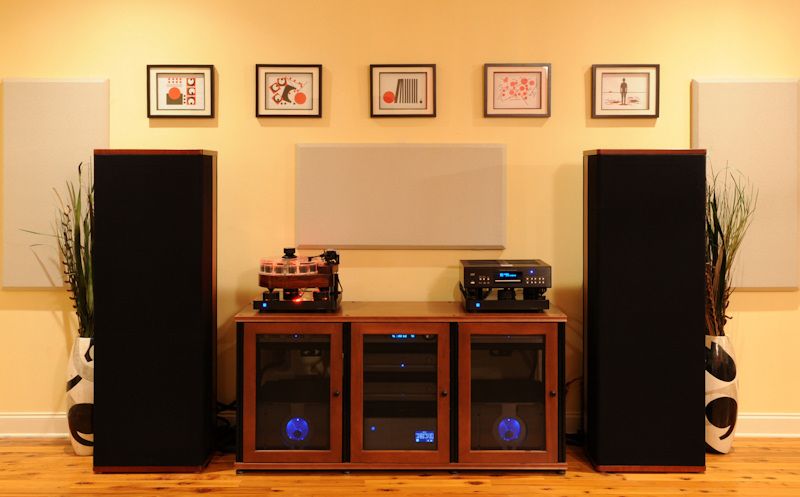
Figure 10. Two channel audio system.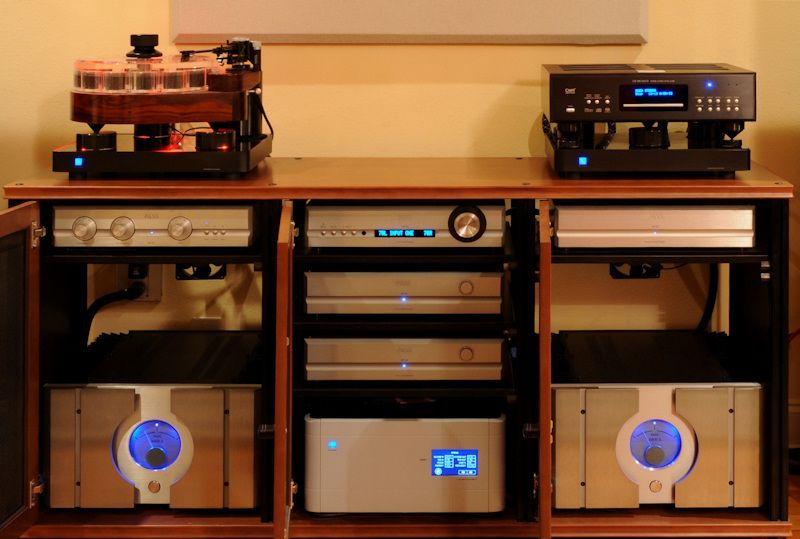
Figure 11. Two channel audio system electronics.
The Anacondas were burned in only on the power amps, each of which draws 5 amps continuously at idle and which are left on 24/7. I sent an email to Shunyata asking if it would be ok to use my Audiodharma Cable Cooker on the Anacondas. I was advised not to use the Cooker more than three days straight and to then move the Anacondas to my power amps. In the end, I decided not to use the Cooker because the its conditioning signal is only 1.88 amps/22 watts compared to the X600.5's current draw of 5 amps/600 watts.
Critical listening sessions were conducted at 50 hours, 100 hours, 123 hours and 137 hours. Immediately after installation, the only apparent difference between the sound of the Anaconda's and that of the AC-12s was a marked emphasis on high frequencies. Vocals were sibilant and hissy and high frequency percussion instruments like a drum set's high hat and a shaker were blurred and hissy. The high frequency emphasis was gone the next day. I noted the same initial hot high end with the AC-12s when I first installed them (AC-12 review).
Once the hot high end had settled down, I did not perceive a difference between the Anaconda's sound and what I remembered of the AC-12's sound during casual listening. When I sat down for critical listening at the 50 hour point, first with an Anaconda on the right power amp and an AC-12 on the left power amp, I noticed a shift in image weight to the left and a loss of overall detail on the right. This was evident in stereo and mono mode listening.
In stereo mode listening, spatial mapping and descriptive analysis of sound stage images was next conducted with both amps having the AC-12s first and then the Anacondas. The results were as follows:
1. The Anaconda's sound stage width and height was equivalent to the AC-12's, but depth was shortened.
2. The Anacondas produced a slight veiling. For example, piano notes had truncated sustain, overtones and decay.
3. Image weight and tactile sensation was decreased with the Anacondas.
4. Bass articulation and bass detail was diminished with the Anacondas.
5. The pace, rhythm and timing of music seemed slower with the Anacondas.
6. The noise floor was raised with the Anacondas, as evidenced by apparently lower sound level.
7. Some sound images (like Dave Brubeck's piano on "Take Five") were reduced in apparent size.
There were no changes or improvements at the 100 hour, 123 hour, and 137 hour critical listening sessions. The dealer mentioned that the ZiTron power cables go through a phase where they enter a "shut down" mode and sound bad for a while until they are fully broken in. I did not experience such a shut down phase. Another review found online did not mention a shut down phase, although it only documented 275 hours of break in (here). The Anaconda's never sounded "bad" in my system, they just never equaled or surpassed the sound quality of the AC-12s.
If I were going from the amp's stock power cord to the Anaconda, or from a lesser audio grade power cord, such as the PS Audio Statement SC, to the Anaconda, I would have been very impressed and would have kept the Anacondas. Indeed, the dealer was very surprised at my results as he had never encountered anyone who preferred a "very inexpensive" power cord to the Anacondas.
I replied that the AC-12's, at $1,200, would likely cost two or three times as much if they, like the Shunyatas, were made in the U.S.A. rather than China. PS Audio's decision to manufacture their power cables in China was not a purely economic decision. According to PS Audio CEO Paul McGowan, no U.S. manufacturer has the capability to manufacture their cables with the PCOCC (Pure Copper by Ono Continuous Casting Process) copper and the patented nitrogen-injected polyethylene insulation. According to Paul:
"All said and done, if we were to go US I would start from scratch and redesign the power cables from the ground up using materials and processes US manufacturers can do."
Measurements
Time domain and noise spectrum (Fast Fourier Transform) measurements were taken with a Tektronix TDS 2012 digital oscilloscope at 123 hours. The 60 Hz power signal was supplied by one of the four household outlets behind my kitchen counters. The only appliances on that 20 amp circuit are the disposal and a microwave oven. The total harmonic distortion of the power delivered to my home typically ranges from 1.1% to 1.7% over a 24 hour period.
It is easier to see differences in the FFT plots if they are saved to your computer and viewed in succession. Looking at noise amplitudes in the area of the 60 Hz power signal (the largest spike on the left in figures 12-14), the Anaconda cable consistently showed less noise than the wall. The AC-12 cable consistently showed less noise than the wall and the Anaconda cable. However, I must add the qualification that this is a comparison of an Anaconda cable with a few days of use compared to an AC-12 cable with several years of use.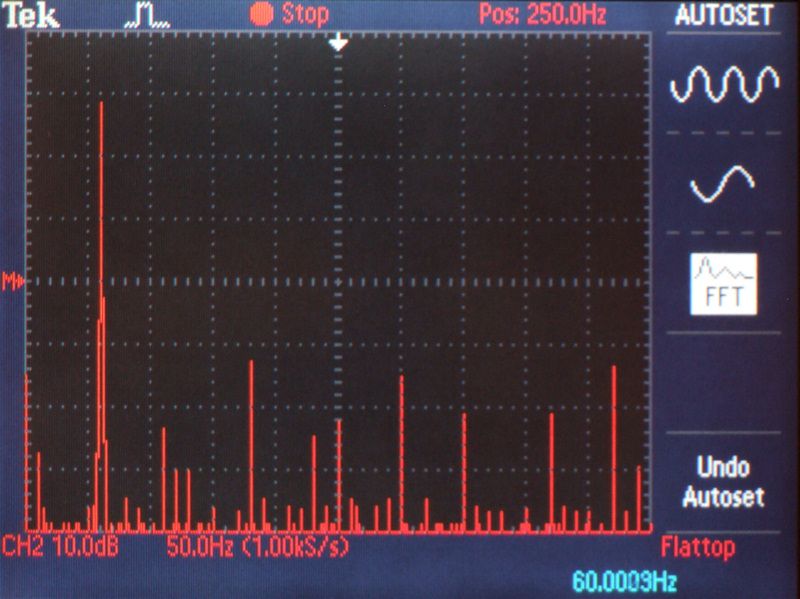
Figure 12. FFT noise spectrum from wall receptacle.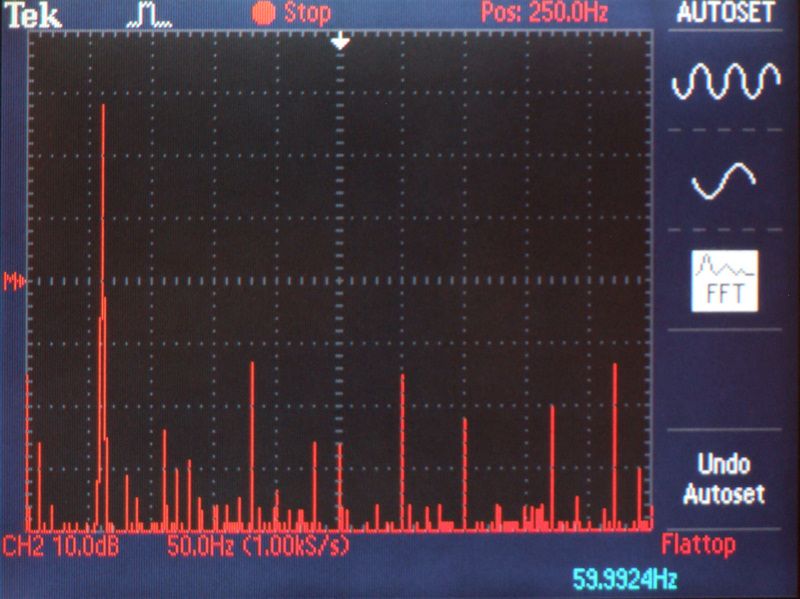
Figure 13. FFT noise spectrum from Anaconda power cord.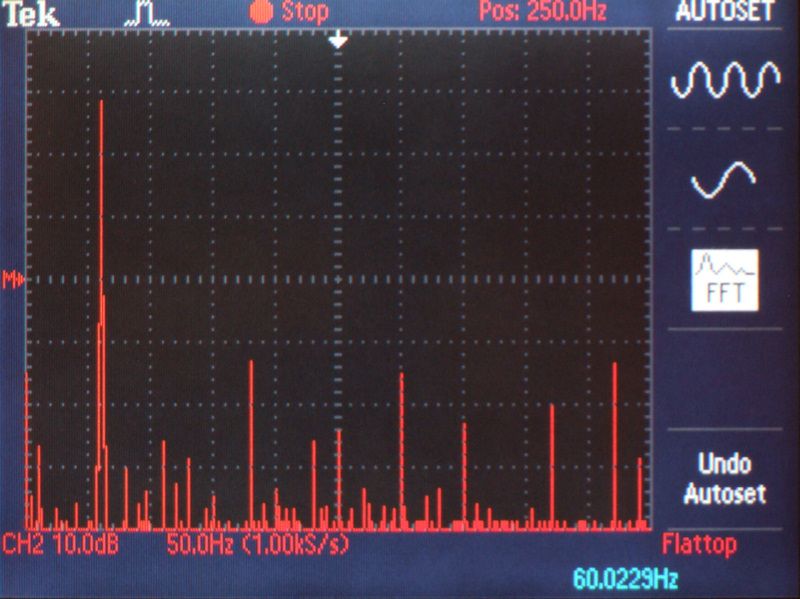
Figure 14. FFT noise spectrum from AC-12 power cord.
Conclusion
Although the results from this evaluation were inconclusive, some valuable insight was gained. The measurement results and listening evaluation results might have tilted in the Anaconda's favor had the Anacondas been burned in for the recommended 500 hours (21 days on my two channel power amps), and then again, they might not have. The AC-12 power cables are quantitatively higher performance cables than the Premier SC cables they replaced, however, as I noted in my AC-12 review, the AC-12's only outperformed the Premier SCs when used between the wall and a component. The Premier SCs outperformed the AC-12s when used between an AC regenerator and a component. The synergistic interaction between system audio components, power infrastructure and environmental electrical and mechanical noise will have an effect on how well an audio grade power cable performs in a given application.Proud and loyal citizen of the Digital Domain and Solid State Country! -
Thanks very much for the power cord write up and your (as usual) very in depth comparison Ray. I will simply say, I am glad to have an AC-12 on my BAT VK-31 then.


Taken from a recent Audioholics reply regarding "Club Polk" and Polk speakers:
"I'm yet to hear a Polk speaker that merits more than a sentence and 60 seconds discussion."
My response is: If you need 60 seconds to respond in one sentence, you probably should't be evaluating Polk speakers.....
"Green leaves reveal the heart spoken Khatru"- Jon Anderson
"Have A Little Faith! And Everything You'll Face, Will Jump From Out Right On Into Place! Yeah! Take A Little Time! And Everything You'll Find, Will Move From Gloom Right On Into Shine!"- Arthur Lee -
There's always something better around the corner. You'll never know until you try it yourself. Don't forget to do a double blind test.
 Proud and loyal citizen of the Digital Domain and Solid State Country!
Proud and loyal citizen of the Digital Domain and Solid State Country! -
DarqueKnight wrote: »There's always something better around the corner. You'll never know until you try it yourself. Don't forget to do a double blind test.

I am afraid if I did double blind test on any of my equipment I would discover it actually all sounds the same. :sad: :razz:
Edit: I actually read the entire write up this time Ray.

Taken from a recent Audioholics reply regarding "Club Polk" and Polk speakers:
"I'm yet to hear a Polk speaker that merits more than a sentence and 60 seconds discussion."
My response is: If you need 60 seconds to respond in one sentence, you probably should't be evaluating Polk speakers.....
"Green leaves reveal the heart spoken Khatru"- Jon Anderson
"Have A Little Faith! And Everything You'll Face, Will Jump From Out Right On Into Place! Yeah! Take A Little Time! And Everything You'll Find, Will Move From Gloom Right On Into Shine!"- Arthur Lee -
I'm glad you decided to post your thoughts after all.Political Correctness'.........defined
"A doctrine fostered by a delusional, illogical minority and rabidly promoted by an unscrupulous mainstream media, which holds forth the proposition that it is entirely possible to pick up a t-u-r-d by the clean end."
President of Club Polk -
I'm glad you decided to post your thoughts after all.
It took some time to convince myself that my thoughts might be of value even though I didn't do a double blind test with switchboxes.Proud and loyal citizen of the Digital Domain and Solid State Country! -
I'm sure all this talk about double blind tests has offended at least one blind person, so you know a lawsuit is only a matter of time.Political Correctness'.........defined
"A doctrine fostered by a delusional, illogical minority and rabidly promoted by an unscrupulous mainstream media, which holds forth the proposition that it is entirely possible to pick up a t-u-r-d by the clean end."
President of Club Polk -
I wasn't aware that there was a Braille edition of the forum.
Do those text-to-speech programs work with message boards?Proud and loyal citizen of the Digital Domain and Solid State Country! -
ONLY if you can listen.


Taken from a recent Audioholics reply regarding "Club Polk" and Polk speakers:
"I'm yet to hear a Polk speaker that merits more than a sentence and 60 seconds discussion."
My response is: If you need 60 seconds to respond in one sentence, you probably should't be evaluating Polk speakers.....
"Green leaves reveal the heart spoken Khatru"- Jon Anderson
"Have A Little Faith! And Everything You'll Face, Will Jump From Out Right On Into Place! Yeah! Take A Little Time! And Everything You'll Find, Will Move From Gloom Right On Into Shine!"- Arthur Lee -
DK, thanks for another great write up, I'm always ready to read one of your very thorough reviews.Home Theater
Onkyo PR-SC5508 Sharp LC-70LE847U
Emotiva XPA-5 Emotiva XPA-2 Emotiva UPA-2
Front RTi-A9 Wide RTi-A7 Center CSi-A6 Surround FXi-A6 Rear RTi-A3 Sub 2x PSW505
Sony BDP-S790 Dishnetwork Hopper/Joey Logitech Harmony One Apple TV
Two Channel
Oppo 105D BAT VK-500 w/BatPack SDA SRS 2.3 Dreadnought Squeezebox Touch Apple TV -
Thanks for your insightful write up Raife. I enjoy reading reviews even when the product did not meet expectations - always learn something. I was surprised that the AC plug blades are gold over nickel plated brass.
Nickel plated brass usually is associated with less than stellar performance in connectors. I wonder if this may have contributed to the slightly dysfunctional highs."Science is suppose to explain observations not dismiss them as impossible" - Norm on AA; 2.3TL's w/sonicaps/mills/jantzen inductors, Gimpod's boards, Lg Solen SDA inductors, RD-0198's, MW's dynamatted, Armaflex speaker gaskets, H-nuts, brass spikes, Cardas CCGR BP's, upgraded IC Cable, Black Hole Damping Sheet strips, interior of cabinets sealed with Loctite Power Grab, AI-1 interface with 1000VA A-L transformer -
Superb analysis, as usual. Enjoyable reading
H9"Appreciation of audio is a completely subjective human experience. Measurements can provide a measure of insight, but are no substitute for human judgment. Why are we looking to reduce a subjective experience to objective criteria anyway? The subtleties of music and audio reproduction are for those who appreciate it. Differentiation by numbers is for those who do not".--Nelson Pass Pass Labs XA25 | EE Avant Pre | EE Mini Max Supreme DAC | MIT Shotgun S1 | Puritan Audio PSM136 Pwr Condtioner & Classic PC's | Legend L600 | Roon Nucleus 1 w/LPS - Tubes add soul! -
Thanks for the review. Impressive setup!
-
Nice Write up as usual , enjoyed the entire experience.Dan
My personal quest is to save to world of bad audio, one thread at a time. -
Excellent review. It amazes me how much effect PCs have on a system.Lumin X1 file player, Westminster Labs interconnect cable
Sony XA-5400ES SACD; Pass XP-22 pre; X600.5 amps
Magico S5 MKII Mcast Rose speakers; SPOD spikes
Shunyata Triton v3/Typhon QR on source, Denali 2000 (2) on amps
Shunyata Sigma XLR analog ICs, Sigma speaker cables
Shunyata Sigma HC (2), Sigma Analog, Sigma Digital, Z Anaconda (3) power cables
Mapleshade Samson V.3 four shelf solid maple rack, Micropoint brass footers
Three 20 amp circuits. -
drumminman wrote: »I was surprised that the AC plug blades are gold over nickel plated brass.
Actually, I misspoke. The AC-12 plug blades are gold plate over high copper content brass as described in the "connectors" section of this article. The AC-10, AC-5 and AC-3 power cables have nickel plated prongs. Also, the Anaconda connectors are pure copper rather than brass. I have asked Ken to make corrections.drumminman wrote: »Nickel plated brass usually is associated with less than stellar performance in connectors. I wonder if this may have contributed to the slightly dysfunctional highs.
The product description for the Shunyata Anaconda power cord says the nickel plating has no harmful sonic effect:
"Shunyata CopCon Connectors
Python and Anaconda Zi-tron conductors are so large they wouldn't fit in any of the AC connectors Shunyata could source. So Shunyata was forced to engineer new connectors able to handle the extra girth. These new CopCon connectors are machined from pure copper billet then coated with an extremely thin layer of nickel to protect against corrosion and wear with no sonic compromise."
Nickel plated and silver plated connectors have earned bad reputations for harsh sound due to poor construction techniques and low purity metals. A connector should not be written off solely on the basis that it uses a particular metal. The purity of the metal, the thickness and quality of plating, and the way connector surfaces are smoothly polished affect the sound. Polished connectors are labor intensive and are therefore not common. High purity metals are also not common.Proud and loyal citizen of the Digital Domain and Solid State Country! -
It amazes me how much effect PCs have on a system.
It amazes me too.
I sincerely wish this was true: "any competently designed audio component has a power supply that will completely filter line noise.".Proud and loyal citizen of the Digital Domain and Solid State Country! -
Shunyata CopCon Connectors
Python and Anaconda Zi-tron conductors are so large they wouldn't fit in any of the AC connectors Shunyata could source. So Shunyata was forced to engineer new connectors able to handle the extra girth. These new CopCon connectors are machined from pure copper billet then coated with an extremely thin layer of nickel to protect against corrosion and wear with no sonic compromise."
That's odd because they look and have a loose fit just like every other generic hospital grade connector. One would think they would have engineered a state of the art, tight fitting connector like PS Audio did.Political Correctness'.........defined
"A doctrine fostered by a delusional, illogical minority and rabidly promoted by an unscrupulous mainstream media, which holds forth the proposition that it is entirely possible to pick up a t-u-r-d by the clean end."
President of Club Polk -
That's odd because they look and have a loose fit just like every other generic hospital grade connector. One would think they would have engineered a state of the art, tight fitting connector like PS Audio did.
The dealer said thicker, tighter fitting prongs cause contact damage to outlets and prongs. However, looking at figure 6 in the first post, what you see is an AC-12 plug that has been inserted and removed from an outlet numerous times since 2009 and a brand new Anaconda plug that had never been inserted into a residential outlet. The Anaconda plug had only seen use during quality control testing at the factory. With the naked eye, the much larger and thicker, and older, AC-12 prongs appear to be in very good shape.
Using standard connector sizes and shapes allowed them to use better materials with standard tooling, rather than incurring the expense for custom manufacturing. A custom connector might have required use of offshore manufacturing. Recall that PS Audio said the capability for manufacturing their cables and proprietary connectors does not exist in the U.S.Proud and loyal citizen of the Digital Domain and Solid State Country! -
The dealer said thicker, tighter fitting prongs cause contact damage to outlets and prongs.
Pure horse hockey.Political Correctness'.........defined
"A doctrine fostered by a delusional, illogical minority and rabidly promoted by an unscrupulous mainstream media, which holds forth the proposition that it is entirely possible to pick up a t-u-r-d by the clean end."
President of Club Polk -
Pure horse hockey.
I can see where this might have some merit with ordinary prongs.
In the case of the Power Port Premier receptacles and AC-12 prongs, they are smoothly polished and heavily gold plated, therefore the risk of significant contact damage is minimal.
Looking at figure 6, the years-old AC-12 prongs are much smoother than the brand new Anaconda prongs, which have more of a pitted appearance.
In retrospect, I wish I were more of a patient sort, but I just don't like waiting for nearly a month or over a month before a product blossoms to its claimed performance. I should be able to tell right out of the box whether the new thing is better than what I am currently using. As I have said before, I typically need for new products to start impressing me within the first 50 hours of use.Proud and loyal citizen of the Digital Domain and Solid State Country! -
Fantastic write up. Thanks so much. I was going to pull the trigger on an AnaZ for my Triton, but the wall plug sag is a deal-breaker for me (using Clear Beyond C19 and it is beautiful). And since when does a power cord need 500+ hrs to "break-in"? Silly sales ploy imo.
Keep up the great work, and keep on listening.
SM -
For $3300 a piece, I'd hope the dealer or manufacturer would do the burn in for me before selling me something! I've sold plenty of things that never got 500 hours on them.
I also agree with the idea and have experienced that if a piece of gear or cable hasn't impressed after a couple days continuous use (the 50 hour guide), it's probably not going to change much more for the better.
Unfortunately, I have also experienced that using cables from the same manufacturer produced around the same time throughout the signal chain yields best results. Mixing and matching has often resulted in off balance sound for me. Did Shunyata offer any advice or opinion on that, or would they say that their product should make any system sound better? -
SynapseMeister wrote: »I was going to pull the trigger on an AnaZ for my Triton, but the wall plug sag is a deal-breaker for me (using Clear Beyond C19 and it is beautiful).
You never know, the AnaZ might not have sagged in your outlets and might have sounded spectacular in your system.SynapseMeister wrote: »And since when does a power cord need 500+ hrs to "break-in"? Silly sales ploy imo.
Very long break in times seems to be the norm for cryogenically treated items. I auditioned a cryoed PS Audio Power Port Premier that didn't sound right after over 500 hours of break in:
http://forum.polkaudio.com/discussion/75093/studies-on-residential-power-line-noise-part-5-ps-audio-power-port-premierUnfortunately, I have also experienced that using cables from the same manufacturer produced around the same time throughout the signal chain yields best results. Mixing and matching has often resulted in off balance sound for me. Did Shunyata offer any advice or opinion on that, or would they say that their product should make any system sound better?
I have never read a warning about, or been advised against, using Shunyata products with other manufacturer's products.
Proud and loyal citizen of the Digital Domain and Solid State Country! -
DarqueKnight wrote: »I have never read a warning about, or been advised against, using Shunyata products with other manufacturer's products.
I was curious, so looked on the Shunyata FAQ site to see what they say about mix and match systems and found this:
"Power cords should not be viewed as individual standalone items but rather as an integrated system with the goal of optimized DTCD™ and minimal RFI/EMI distortions. Power cords interact with one another when they are connected to the same power line circuit (same outlet). This means that when one model or one type of power cord is tested it becomes inextricably linked both electrically and in terms of its performance signatures with other cords in the system. This is one of several reasons why opinions differ when trying a single model of power cord mixed with others of varying designs. Most will find however that when evaluating models from a single maker they will have a uniform performance signature that is consistent across systems. For these reasons, when evaluating power cords attempt get enough of the model you want to try so that you can replace all the cables in the system. It is impossible to gain a good understanding of any single power cord in a mixed system without alternately evaluating it as part of a closed single manufacturer system."
My system is all PS Audio for power cords and interconnects from a couple generations back, so not overly expensive and suited to what I like to hear. When I have mixed in other manufacturer power cords and interconnects, something has seemed to be diminished, edgy, or just not "right". Took me a long time to figure out what was going on. As Shunyata says though, opinions differ regarding single model cords in a system. Can get pretty expensive testing that theory!
-
Yes, it does get expensive. Find something that works for you, and stick with it. As I added Shunyata cables I noticed the improvement with each addition. However, I have no desire to go through this exercise again with a different vendor's cables.
At this point my stereo is all Shunyata with Zitron Anaconda XLR interconnects, analog, digital, and speaker. The source gear is attached to a Triton/Typhon combo, which attaches to a dedicated circuit via a Zitron Anaconda. Each amp is on its own circuit, and uses a Cyclops, which attaches to the wall via Zitron Anaconda.
The power cords for the gear is a mixture of Sigma Digital, Alpha Digital, Zitron Cobra, and Zitron Python.
The HT is similar, but not yet 100% Shunyata.
All in all, I am very happy with the results.Lumin X1 file player, Westminster Labs interconnect cable
Sony XA-5400ES SACD; Pass XP-22 pre; X600.5 amps
Magico S5 MKII Mcast Rose speakers; SPOD spikes
Shunyata Triton v3/Typhon QR on source, Denali 2000 (2) on amps
Shunyata Sigma XLR analog ICs, Sigma speaker cables
Shunyata Sigma HC (2), Sigma Analog, Sigma Digital, Z Anaconda (3) power cables
Mapleshade Samson V.3 four shelf solid maple rack, Micropoint brass footers
Three 20 amp circuits. -
Have to disagree about the 500+ hr break-in, for a power cord. Seems illogical - a cable designed to pass maximum instantaneous current should not need hundreds of hrs to perform at optimal level. I think you're right, 50hrs are enough to gauge whether a cord is going to improve SQ in one's system vs. previous cables. Life's too short to be listenin' for flaws when I can be enjoying the music. Besides, $4K buys a LOT of music.
I use an all-Cardas system, and am very happy with them. Gave Shunyata several shots previously: Their ICs (Python/Anac Zitrons) did not sound right; their Alpha-Digital didn't either. CobraZ was the only cable I really enjoyed (on my Triton), before I upgraded to Clear Beyond C19, which is now a permanent rez in my system.
I must admit, Shunyata is excellent at science-based product development. Kudos to them. -
DarqueKnight wrote: »
You never know, the AnaZ might not have sagged in your outlets and might have sounded spectacular in your system.
If it sagged in yours, it will in mine, which are not as robust-looking. -
SynapseMeister wrote: »DarqueKnight wrote: »
You never know, the AnaZ might not have sagged in your outlets and might have sounded spectacular in your system.
If it sagged in yours, it will in mine, which are not as robust-looking.
That sounds kind of... dirty...






